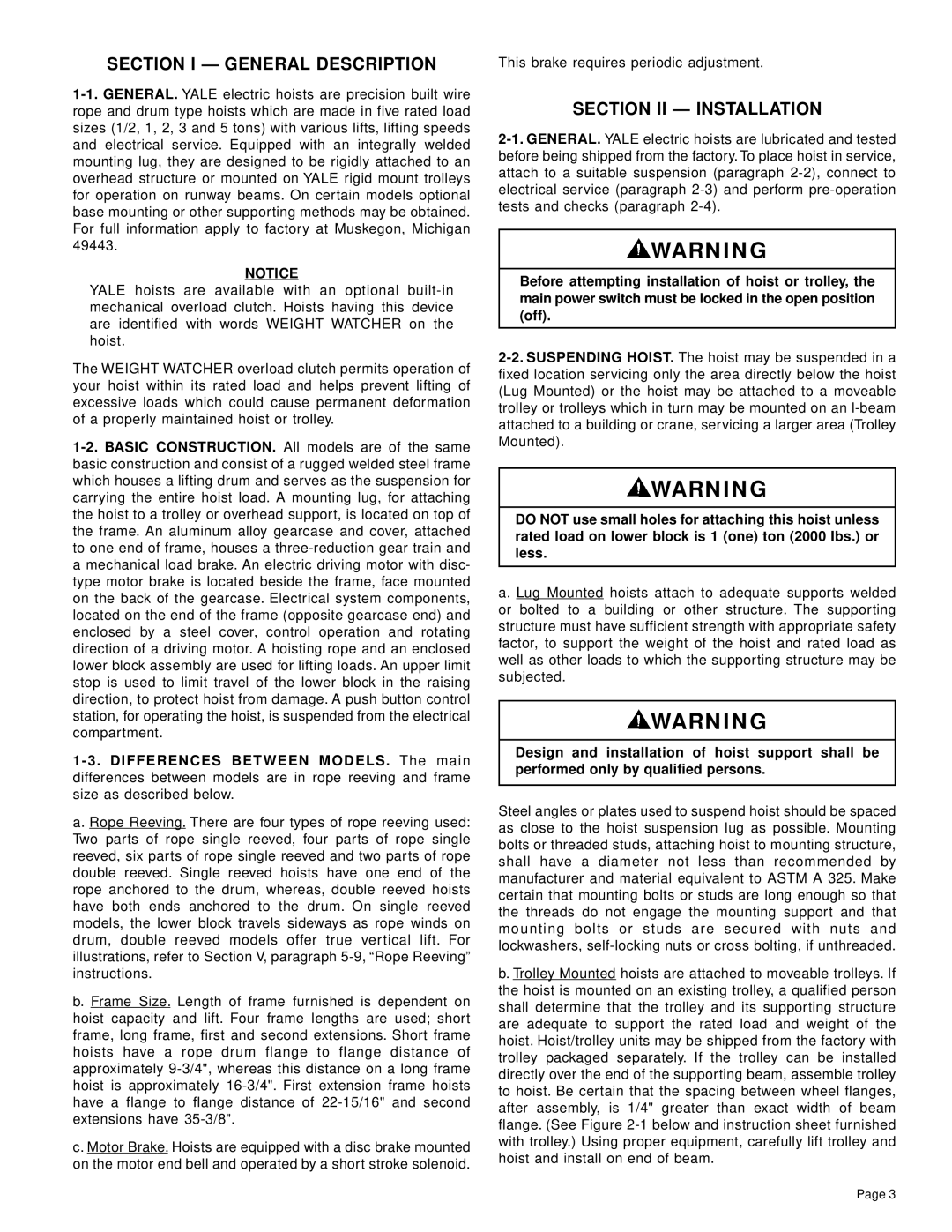
SECTION I — GENERAL DESCRIPTION
NOTICE
YALE hoists are available with an optional
The WEIGHT WATCHER overload clutch permits operation of your hoist within its rated load and helps prevent lifting of excessive loads which could cause permanent deformation of a properly maintained hoist or trolley.
1 - 3 . DIFFERENCES BETWEEN MODELS . The main differences between models are in rope reeving and frame size as described below.
a. Rope Reeving. There are four types of rope reeving used: Two parts of rope single reeved, four parts of rope single reeved, six parts of rope single reeved and two parts of rope double reeved. Single reeved hoists have one end of the rope anchored to the drum, whereas, double reeved hoists have both ends anchored to the drum. On single reeved models, the lower block travels sideways as rope winds on drum, double reeved models offer true vertical lift. For illustrations, refer to Section V, paragraph
b. Frame Size. Length of frame furnished is dependent on hoist capacity and lift. Four frame lengths are used; short frame, long frame, first and second extensions. Short frame hoists have a rope drum flange to flange distance of approximately
c. Motor Brake. Hoists are equipped with a disc brake mounted on the motor end bell and operated by a short stroke solenoid.
This brake requires periodic adjustment.
SECTION II — INSTALLATION
![]() WARNING
WARNING
Before attempting installation of hoist or trolley, the main power switch must be locked in the open position (off).
![]() WARNING
WARNING
DO NOT use small holes for attaching this hoist unless rated load on lower block is 1 (one) ton (2000 Ibs.) or less.
a. Lug Mounted hoists attach to adequate supports welded or bolted to a building or other structure. The supporting structure must have sufficient strength with appropriate safety factor, to support the weight of the hoist and rated load as well as other loads to which the supporting structure may be subjected.
![]() WARNING
WARNING
Design and installation of hoist support shall be performed only by qualified persons.
Steel angles or plates used to suspend hoist should be spaced as close to the hoist suspension lug as possible. Mounting bolts or threaded studs, attaching hoist to mounting structure, shall have a diameter not less than recommended by manufacturer and material equivalent to ASTM A 325. Make certain that mounting bolts or studs are long enough so that the threads do not engage the mounting support and that mounting bolts or studs are secured with nuts and lockwashers,
b. Trolley Mounted hoists are attached to moveable trolleys. If the hoist is mounted on an existing trolley, a qualified person shall determine that the trolley and its supporting structure are adequate to support the rated load and weight of the hoist. Hoist/trolley units may be shipped from the factory with trolley packaged separately. If the trolley can be installed directly over the end of the supporting beam, assemble trolley to hoist. Be certain that the spacing between wheel flanges, after assembly, is 1/4" greater than exact width of beam flange. (See Figure
Page 3
